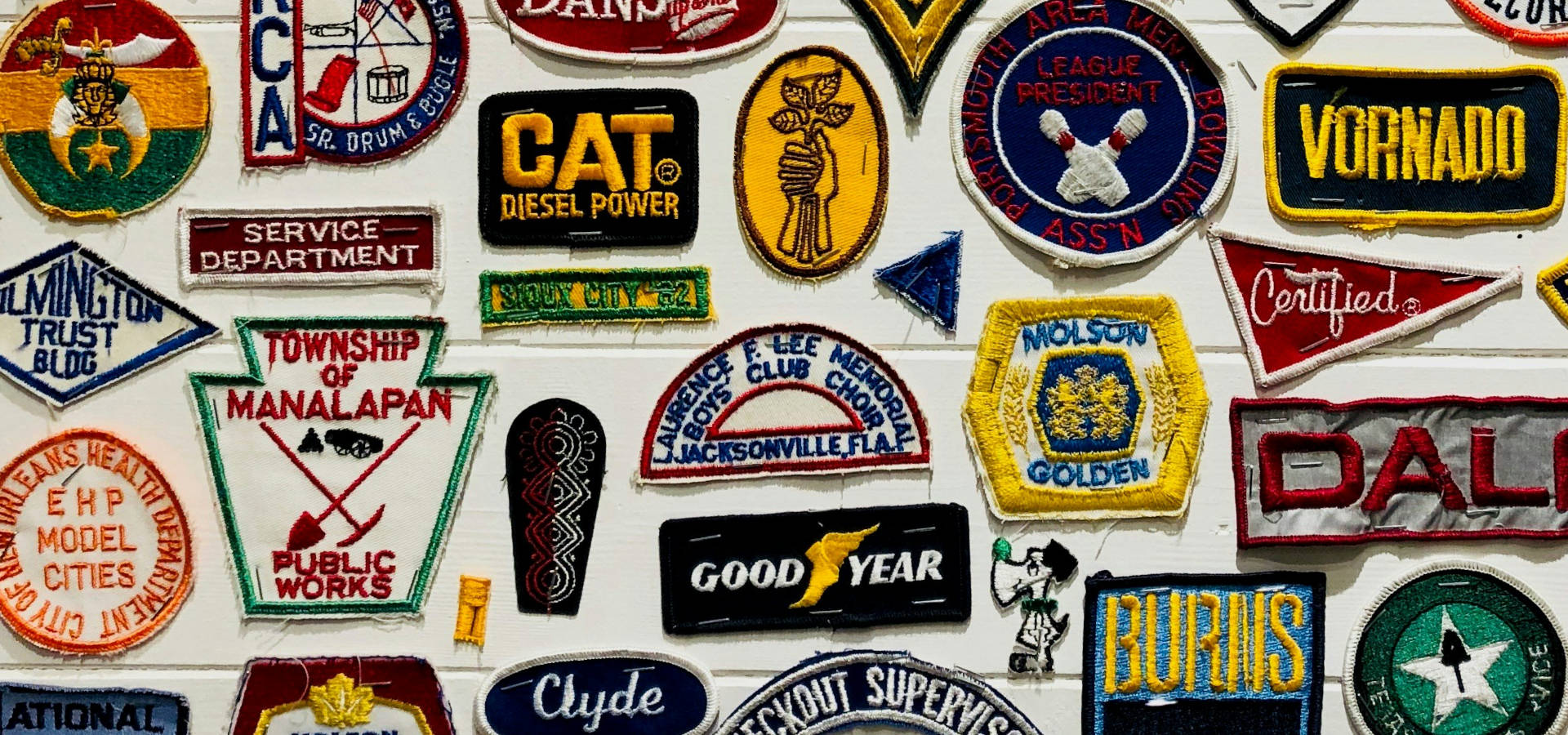
Heritage vs. Historic:
How Legacy Brands
Stay Relevant
Nostalgia: It’s more than that ephemeral ache invoked by “remember when” tweets and ‘90s toys slideshows on TikTok. It’s a brand-building strategy reshaping the creative industry.
Nostalgia is a valuable asset for brands that have been around the block—and around it a few more times. But it takes more than a Serif-font family history and some black-and-white photos on your About page to make an impact.
In the never-ending race for relevance, legacy brands face several seemingly paradoxical dilemmas: Keep up, but don’t abandon the past. Leverage your history, but don’t live in it. Give consumers what they want, but don’t bend to industry fads.
When you’re pulled from both ends, how do you navigate the inevitable tension?
Heritage brands must harness their history without stifling themselves with it, connecting to both loyal brand lovers and new waves of consumers.
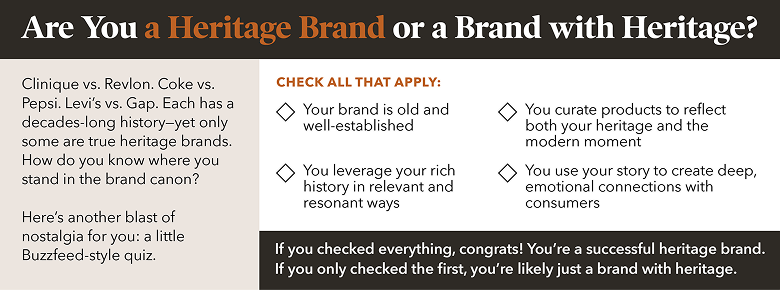
Keep Pushing, But Don’t Forget Who You Are
For brands, maintaining authenticity is tricky. Entire boardrooms of besuited execs have to agree on what defines a brand. Sometimes, they get it wrong.
Take MTV’s pivot toward mediocre reality programming. When the channel abandoned music—you know, what the “M” stands for—the brand lost the goodwill and cultural cachet it had spent decades building. Without music videos, MTV went from household name to household shame, all because they misunderstood what was unique and powerful about their own brand.
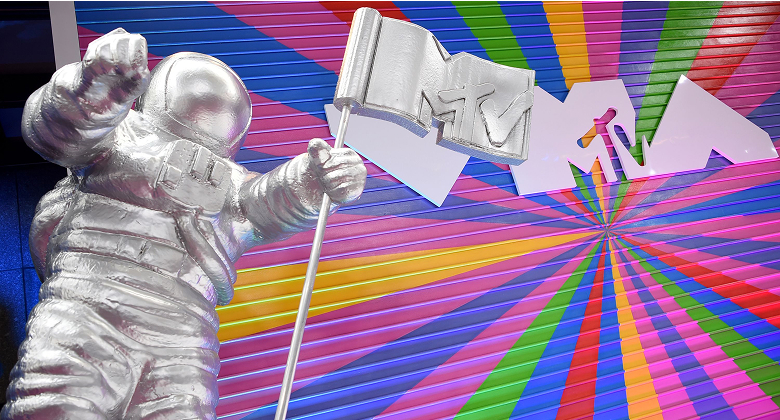
Then there’s Pepsi’s Super Bowl LI blunder. Remember the 2017 protest commercial where Kendall Jenner hands a Pepsi can to a cop? If you’ve forgotten, you’re lucky.
Because Pepsi’s team sure remembers. In an effort to appear relevant, the long-time cola co. made a misstep and lost its footing—not to mention at least $5 million. Any viewer could immediately clock the ad as pandering and inauthentic.1
According to a 2021 study, 70% of global consumers choose to support brands that align with their own values.2 Brands like MTV and Pepsi try to cash in on this preference by playing to their audience’s supposed values (whether through Tila Tequila’s A Shot at Love or world peace).
Unfortunately, corporations fall short when they don’t fully commit to the value they sought to profit from.
On the other end of the spectrum, thriving legacy brand Burt's Bees has woven their core values into the very fabric of their brand identity, empowering consumers who support them.
Burt’s Bees remains steadfastly committed to respecting nature, one of Burt Shavitz and Roxanne Quimby’s original values when they started the company in the Maine wilderness. They understand that a brand using beeswax in all its products should care about its hardest workers, supporting honeybee health and biodiversity through Burt’s Bees Foundation. Burt's Bees can evolve and change with trends because they know how to show up in a way that is authentic to them.
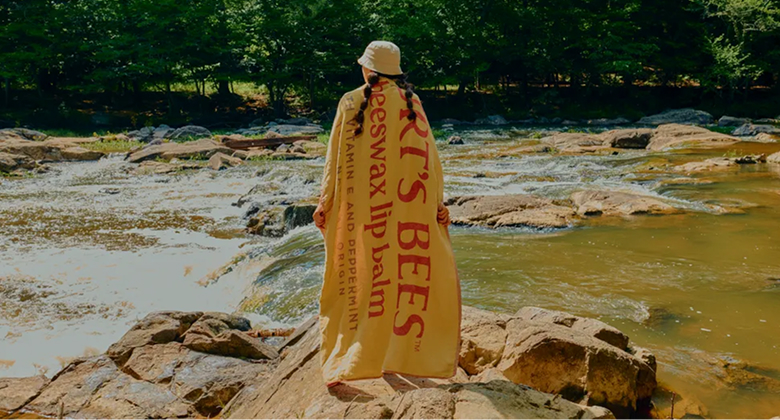
Brands that take action to uphold meaningful values mean more to the consumers who share them. When they buy a Burt’s Bees lip balm or Ben & Jerry’s pint (who among us hasn’t seen their big-swinging, pull-no-punches social content?), they’ll feel like they’re on the journey together with the brand.
Stay True to Your Roots Without Tripping Over Them
Arguably the biggest issue facing legacy brands today is how to balance a rich past with the uncertain future while scaling new heights. What at first seems like an irreconcilable contradiction is actually the perfect recipe for heritage brand harmony.
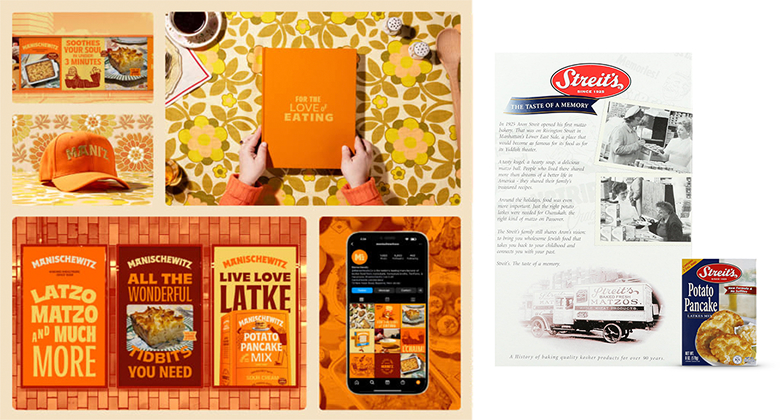
Take Streit's and Manischewitz...two brands that produce similar products. Both brands include their rich history in marketing materials, but only Manischewitz has harnessed that history and reshaped it for the modern consumer. Here’s how:
- New Look, Bigger Impact: How Mani's is Reclaiming Relevance – The Creative Director behind Manischewitz’s rebrand described its industry with one scathing adjective: “beige.”4 But Mani’s no longer fades into the background of the kosher aisle, thanks to a robust marketing makeover. Contemporary written and visual design languages now embody its past while embracing new possibilities, featuring original, energetic fonts, warm hues, and a vibrant voice that resonates with brand lovers. More than a new aesthetic, the rebrand is a strategic marketing reset that reasserts the brand’s role in modern food culture, reaching new audiences while deepening loyalty among longtime fans.
- Engaging Brand Lovers, Not Consumer Demographic Groups – Mani’s knows better than to segment its consumers or pinhole itself to one key demographic. Bubbies, young Jewish folks, and avid foodies alike all enjoy the brand for the same reasons: authentic, high-quality, family-oriented kosher food. The rebrand goes beyond aesthetics: it’s a strategic marketing reset designed to reassert the brand’s role in modern food culture. By pairing bold, contemporary design with messaging that speaks to tradition and discovery, Manischewitz is reaching new audiences while deepening loyalty among longtime fans.
And while we never expect to see Mani’s matzo next to delicate Swarovski crystal, they sit remarkably close when it comes to brand reinvention.
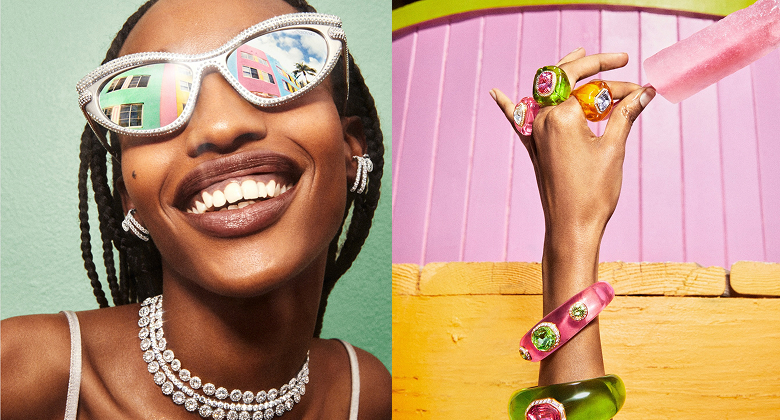
For a faux diamond brand known best for those little glass figurines collecting dust on your mother’s vanity, it’s hard to imagine Swarovski crystals as high-fashion or “Gen Z’s best friend.”4 And yet, in 2023, Swarovski grew a whopping 4% from the year before.5 How? By using 128 years of quality as a springboard for daring new designs—not a fallback plan.
Swarovski recognized a problem plaguing modern marketing: Many heritage brands stay too close to what gave them staying power. Sure, there’s something to be said about sticking to a formula. If it ain’t broke, don’t fix it.
But most big-name brands didn’t make it big by playing it safe. They set ambitious goals. They took (calculated) risks. They stared fear in the face and used it as fuel.
What today’s playbooks lack is risk. Heritage brands, more than anyone else, are in the best position to take smart ones. With a strong reputation, global reach, steady cash flow, and a loyal audience, they can aim high. Even if they miss a bit, they’ll still land on the safety nets they’ve spent a century building.
So, while sticking to your roots is arguably essential for legacy brands, it’s equally important to remember what roots are there for: to anchor you while you grow.
Here’s the bottom line: Names and establishment dates don’t draw in consumers—innovation, creativity and fearlessness do. Sometimes, in order to preserve your history, you have to jump headfirst into the future.

Unlock the Next Phase of Your Legacy with Tomorrow’s Insights, Today
As a heritage brand, the path forward should be entirely unique to you. It must be, if we’re going to preserve what has long made you extraordinary.
Anticipate trends and innovate confidently with real industry insights and data-backed strategies from experts with decades of skin in the game. We love a good story—and we know how to tell them. From visual marketing makeovers to compelling campaigns, we can help you strengthen your brand’s identity and elevate your trajectory.
There’s nothing more human than dreaming big and daring to change. Reignite your spark and reimagine your impact with Spicefire.
- People. How Many Millions Could Pepsi's Pulled Kendall Jenner Ad Cost the Company? https://people.com/food/kendall-jenner-pepsi-commercial-company-cost/
- World Economic Forum. People prefer brands with aligned corporate purpose and values. https://www.weforum.org/stories/2021/12/people-prefer-brands-with-aligned-corporate-purpose-and-values/
- Fast Company. Manischewitz gets a logo refresh (but the gefilte fish stays the same). https://www.fastcompany.com/91077424/manischewitz-gets-a-logo-refresh-but-the-gefilte-fish-stays-the-same/
- Highsnobiety. Crystals Are Gen Z's Best Friend: Inside Swarovski's Rebrand. https://www.highsnobiety.com/p/swarovski-rebrand/
- Fashion Network. Swarovski grows 4% in 2023. https://ww.fashionnetwork.com/news/Swarovski-grows-4-in-2023,1614373.html


